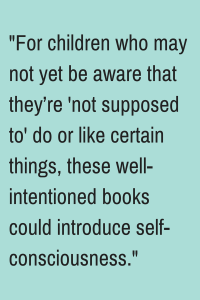![]() Back in June, Laura Reiko Simeon wrote about how race is handled in Swedish picture books. We’re thrilled to host Laura again as she sheds light on how Swedish picture books handle gender and gender-ambiguous characters.
Back in June, Laura Reiko Simeon wrote about how race is handled in Swedish picture books. We’re thrilled to host Laura again as she sheds light on how Swedish picture books handle gender and gender-ambiguous characters.
You sit down with your favorite 4-year-old to read a sweet, wordless picture book featuring a little duck swimming down the river. Quickly, without thinking too hard, what pronoun do you use to describe the duck? Do you say, “Look at him paddle past that shaggy dog!” or “What does she see in the sky?”
If you were like the mothers in a 1985 study, you would use masculine pronouns for 95% of animal characters with no gender-specific characteristics. A follow-up study from 1995 examined children’s use of pronouns and found that by age 7 they had absorbed and were repeating these same gender stereotypes. Listen to those around you: has it changed much since then?
In the US, Sweden is widely regarded as a leader in gender equality, although many Swedes still see a need for greater progress. Meanwhile, our own biases are apparent, for example when we consider gendered toys. Compare this 1981 Lego ad, with its blue jeans and t-shirt-clad girl to the pink-infused products targeted at girls today. As with other social issues, picture books reflect concerns in society at large – but how they’ve done so is dramatically different in the US as compared to Sweden.

